Abstract
Polyvalent Shigella conjugates were prepared for Shigella groups A, B, C, and D. After preliminary testing with pure cultures of both homologous and heterologous organisms, these reagents were used in three evaluation studies. Fecal specimens from patients hospitalized with diarrhea, from children involved in an institutional outbreak of dysentery due to S. sonnei, and from patients with diarrhea in Arizona were screened by fluorescent-antibody (FA) tests and were cultured. Specimens were examined at various periods of time after collection and after incubation in broth and saline. Results showed that shigellae were detected most frequently when specimens were cultured immediately after collection. FA tests revealed more positive results when the specimens were incubated in either saline or broth than when they were examined immediately after collection. The S. sonnei conjugate gave the most reliable results of any of the Shigella FA reagents used in these investigations. It proved to be both sensitive and specific.
Full text
PDF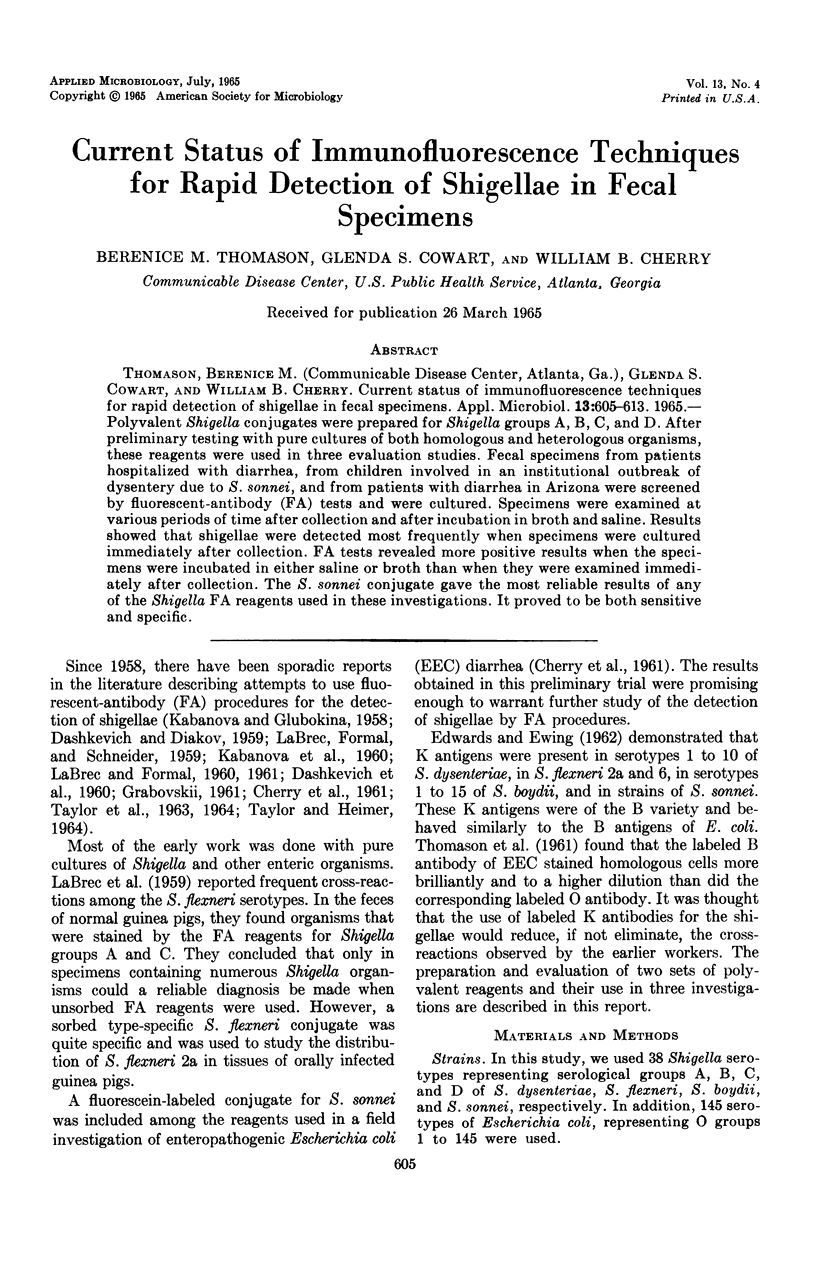
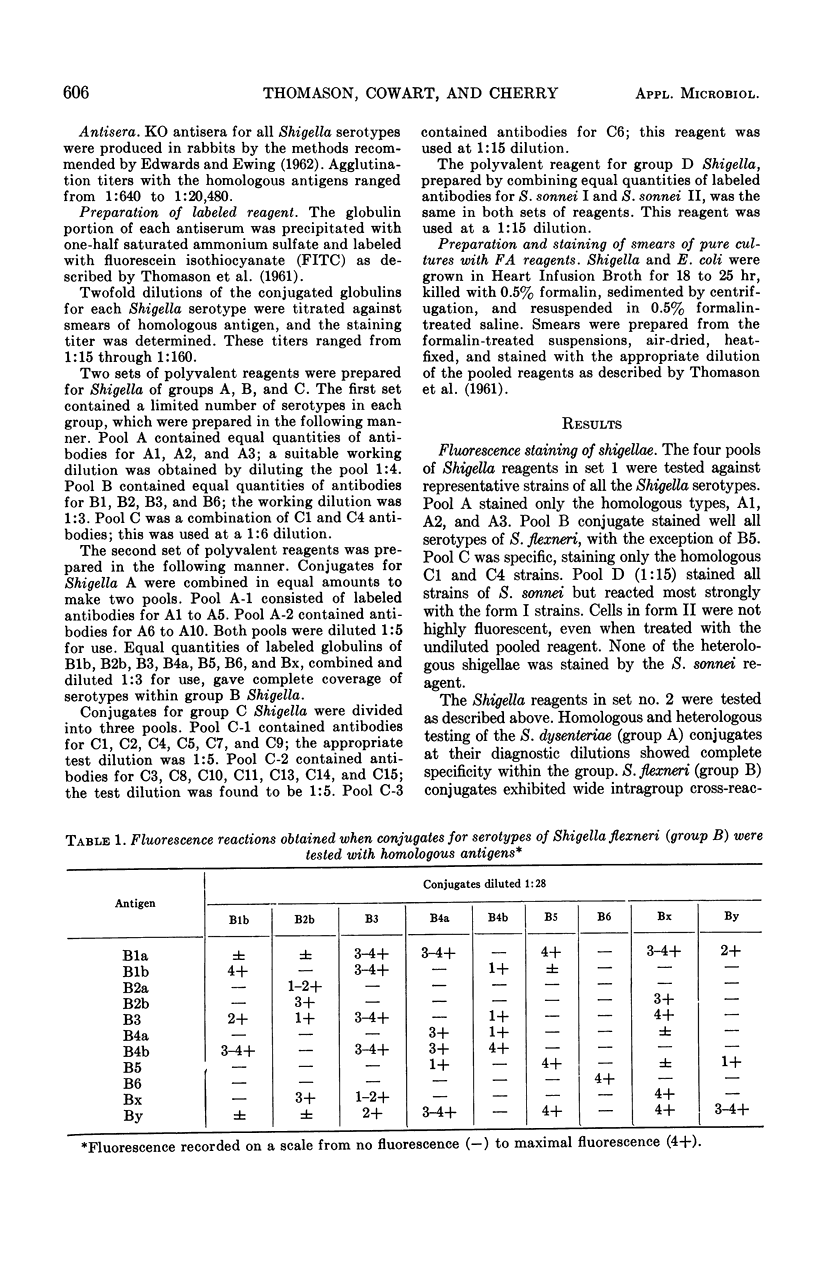
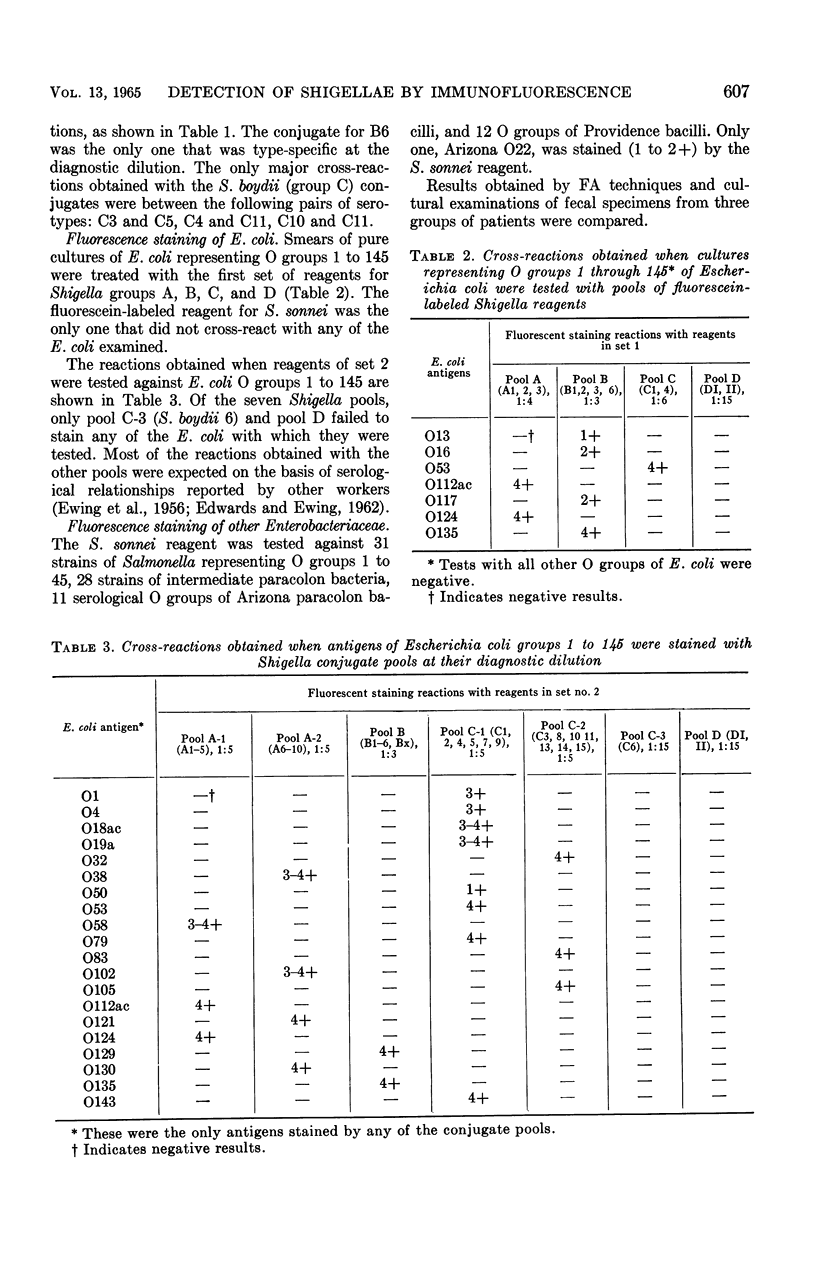
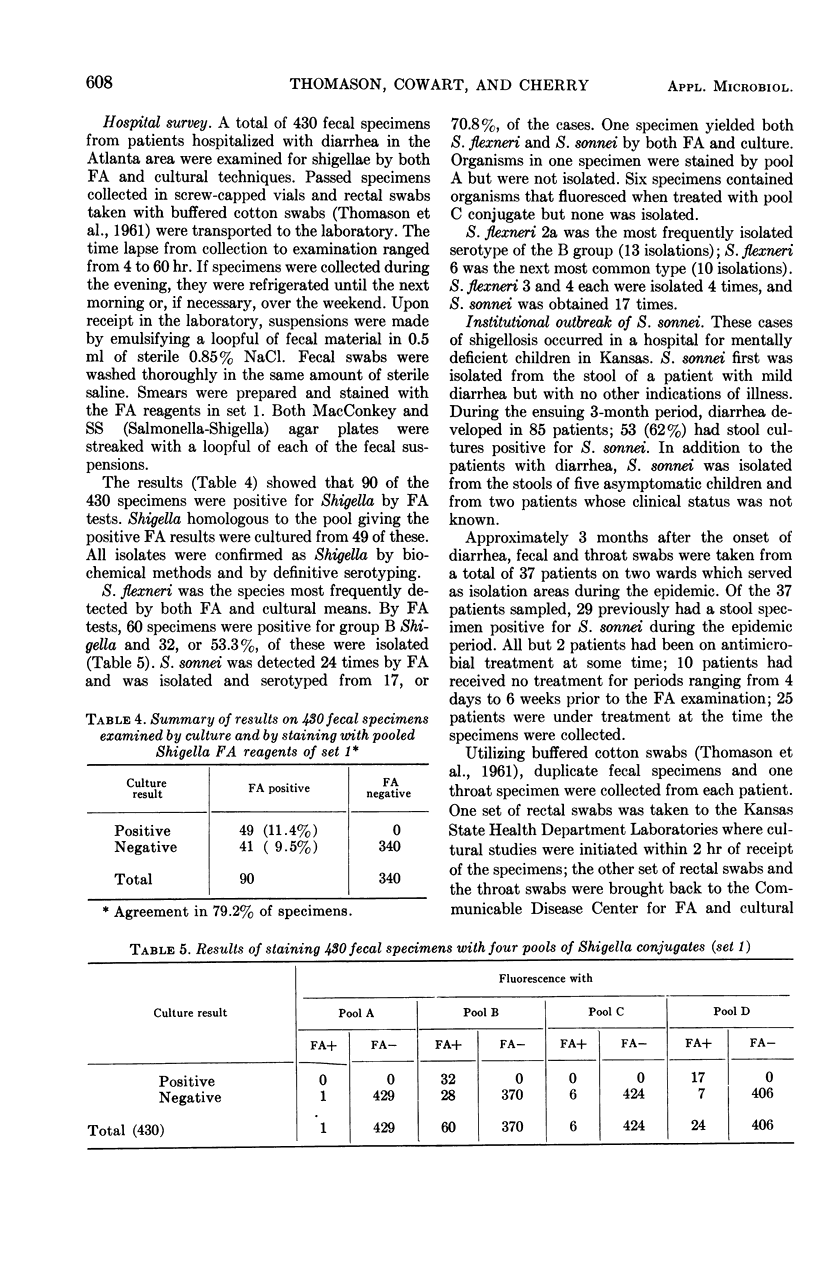
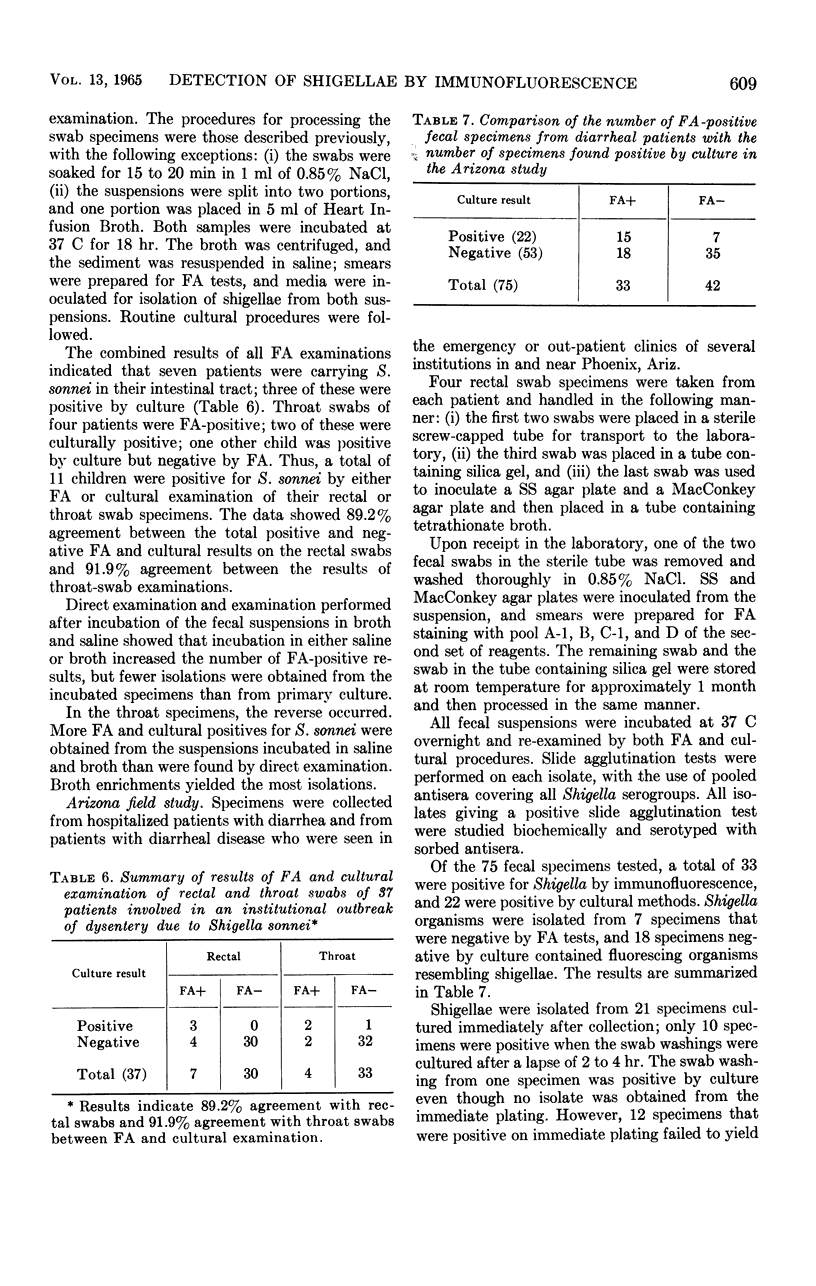
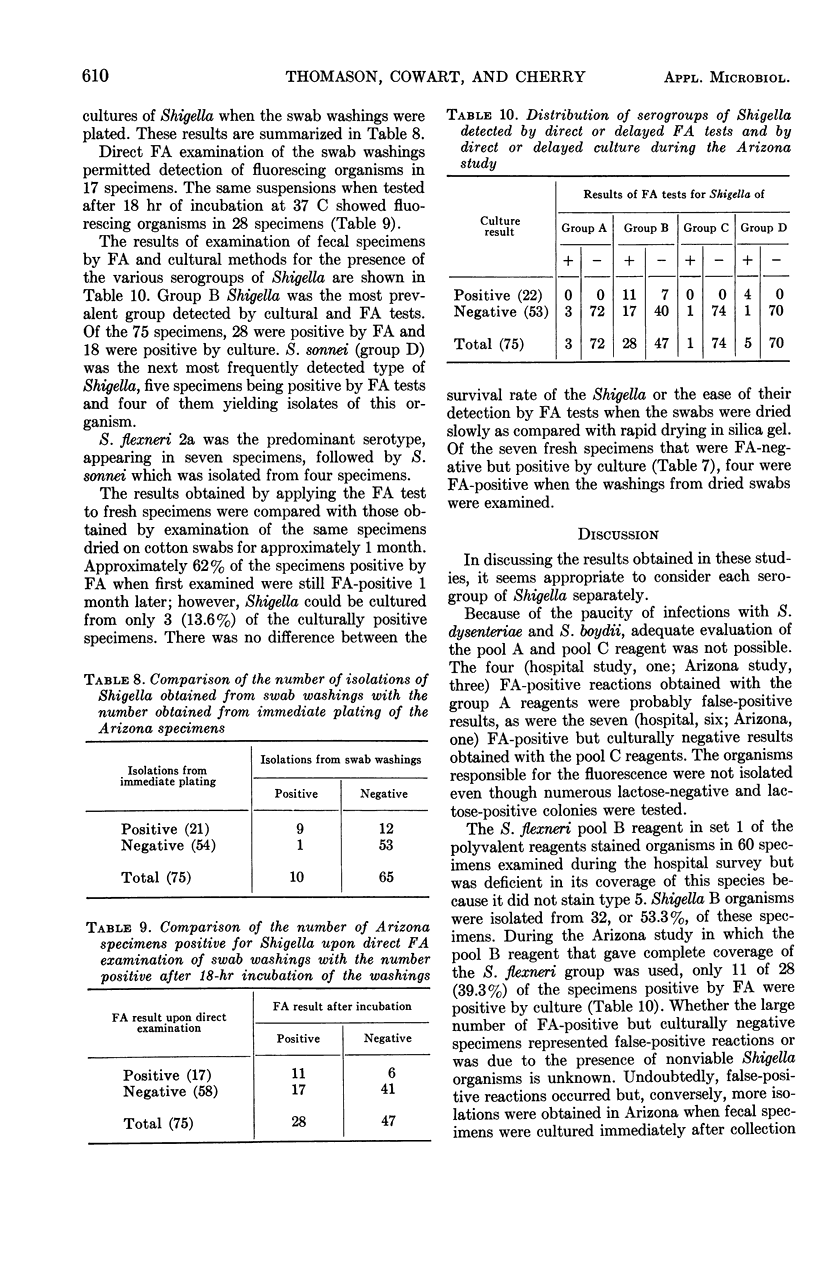
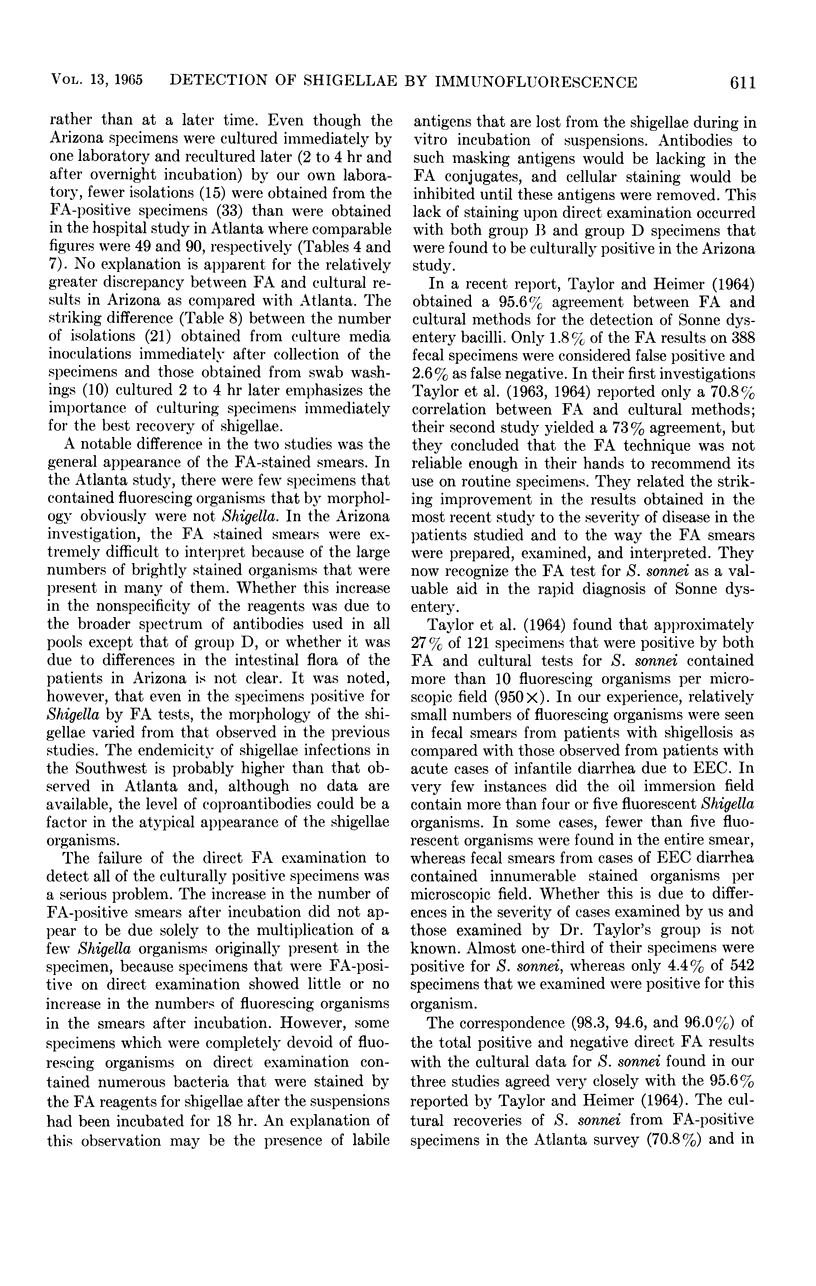
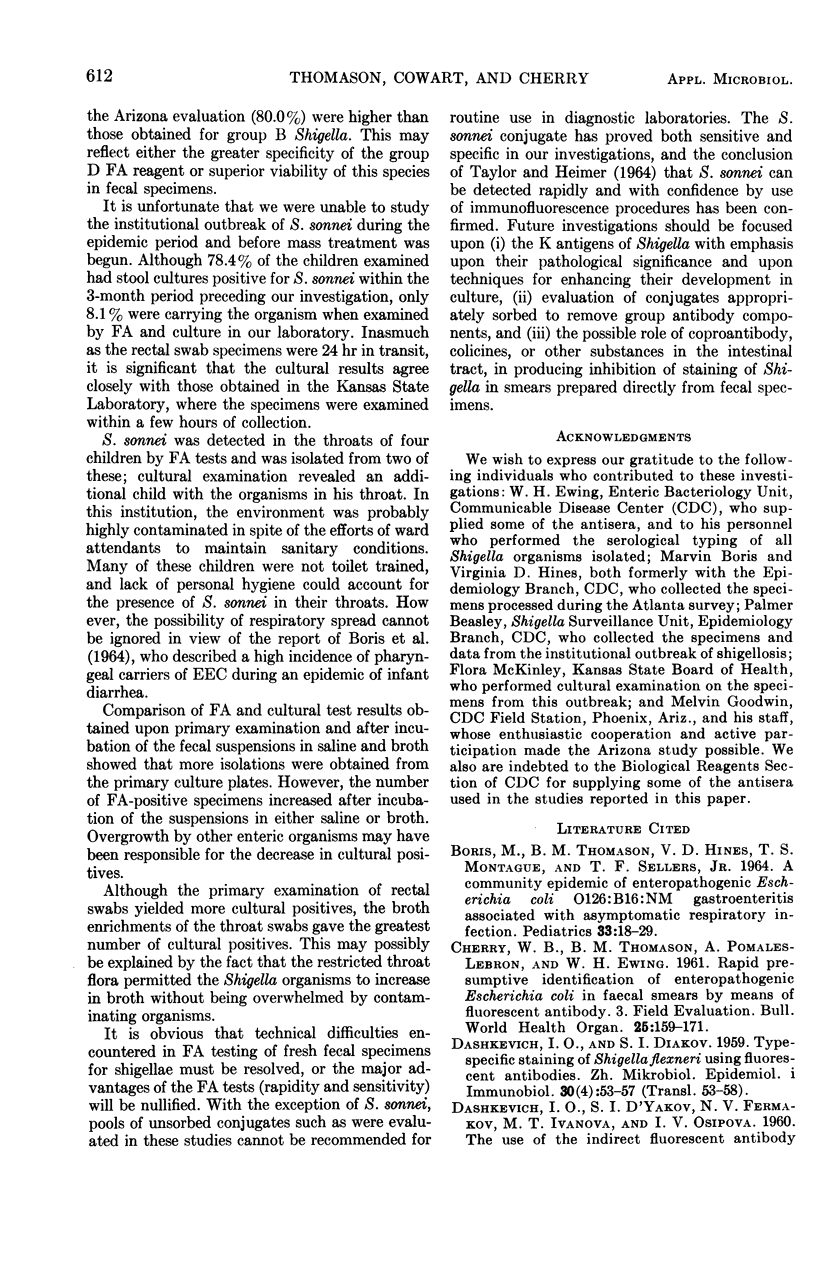
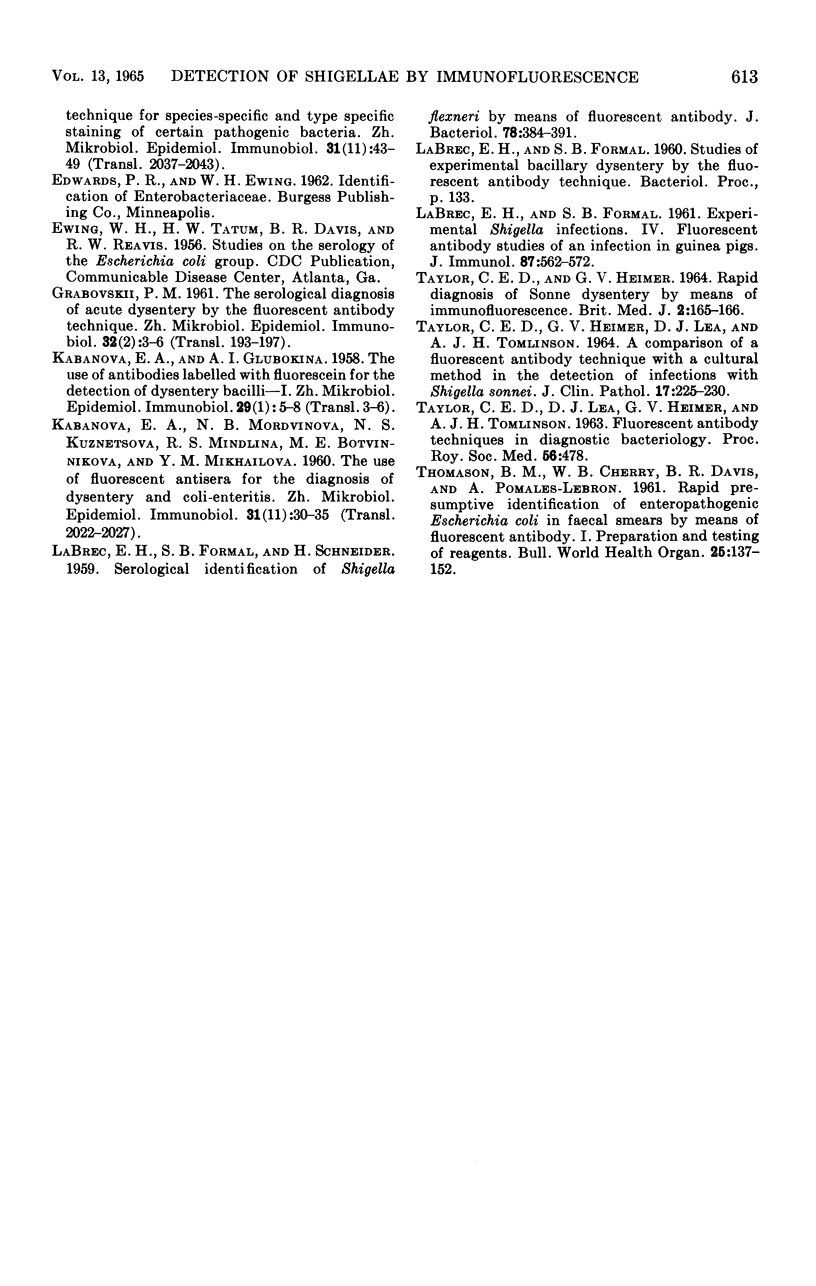
Selected References
These references are in PubMed. This may not be the complete list of references from this article.
- BORIS M., THOMASON B. M., HINES V. D., MONTAGUE T. S., SELLERS T. F., Jr A COMMUNITY EPIDEMIC OF ENTEROPATHOGENIC ESCHERICHIA COLI O126:B16:NM GASTROENTERITIS ASSOCIATED WITH ASYMPTOMATIC RESPIRATORY INFECTION. Pediatrics. 1964 Jan;33:18–29. [PubMed] [Google Scholar]
- KABANOVA E. A., MORDVINOVA N. B., KUZNETSOVA N. S., MINDLINA R. S., BOTVINNIKOVA M. E., MIKHAILOVA Iu M. [Result of the application of luminescent sera in the diagnosis of dysentery and coli-enteritis]. Zh Mikrobiol Epidemiol Immunobiol. 1960 Nov;31:30–35. [PubMed] [Google Scholar]
- LABREC E. H., FORMAL S. B. Experimental Shigella infections. IV. Fluorescent antibody studies of an infection in guinea pigs. J Immunol. 1961 Nov;87:562–572. [PubMed] [Google Scholar]
- LABREC E. H., FORMAL S. B., SCHNEIDER H. Serological identification of Shigella flexneri by means of fluorescent antibody. J Bacteriol. 1959 Sep;78:384–391. doi: 10.1128/jb.78.3.384-391.1959. [DOI] [PMC free article] [PubMed] [Google Scholar]
- TAYLOR C. E., HEIMER G. V., LEA D. J., TOMLINSON A. J. A COMPARISON OF A FLUORESCENT ANTIBODY TECHNIQUE WITH A CULTURAL METHOD IN THE DETECTION OF INFECTIONS WITH SHIGELLA SONNEI. J Clin Pathol. 1964 May;17:225–230. doi: 10.1136/jcp.17.3.225. [DOI] [PMC free article] [PubMed] [Google Scholar]
- TAYLOR C. E., HEIMER G. V. RAPID DIAGNOSIS OF SONNE DYSENTERY BY MEANS OF IMMUNOFLUORESCENCE. Br Med J. 1964 Jul 18;2(5402):165–166. doi: 10.1136/bmj.2.5402.165. [DOI] [PMC free article] [PubMed] [Google Scholar]
- THOMASON B. M., CHERRY W. B., DAVIS B. R., POMALES-LEBRON A. Rapid presumptive identification of entero-pathogenic Escherichia coli in faecal smears by means of fluorescent antibody. 1. Preparation and testing of reagents. Bull World Health Organ. 1961;25:137–152. [PMC free article] [PubMed] [Google Scholar]
- Taylor C. E., Lea D. J., Heimer G. V., Tomlinson A. J. The Applications of Fluorescent Antibody Techniques in Bacteriology and Virology. Proc R Soc Med. 1963 Jun;56(6):478–478. doi: 10.1177/003591576305600611. [DOI] [PMC free article] [PubMed] [Google Scholar]


